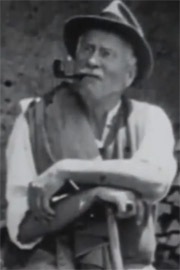Carl Jung — Quick, short facts and stories

Works
Collected works of Jung fill 19 volumes, but most of them were not translated into English until his death. “The Red book” which Jung had been writing during 16 years and where Jung researched his own unconscious remained unpublished till 2009. It took great effort to persuade Jung’s family to allow its publication. The author filled 205 oversized pages with calligraphic writings in German and decorated it with his own paintings.
Alcoholics Anonymous
Carl Jung had a significant, though, indirect, influence on creation of Alcoholics Anonymous organizations believing that faith and spirituality can help people ill on alcoholism to be healed.
Jung and art
Jung was one of the first, who considered art as a therapy. He offered its usage in treating traumas, anxiety states, and different phobias. Jung himself was fond of drawing. When he was a child he could draw all days long. Curiously enough, his school teacher suspended him from drawing lessons on a ground of his inability to draw well. Jung carried on drawing till the end of his life and used to express his feeling and inner world in his pictures.
Occultism
Jung was always curious about occultism. He was deeply impressed after visiting several medium séances of his relative. Editor Joseph Campbell recounts one of such séances:
«He was in his room, studying, with the door half open to the dining room, where his widowed mother was knitting by the window, when a loud report sounded, like a pistol shot, and the circular walnut table beside her split from the rim beyond the center—a table of solid walnut, dried and seasoned for some seventy years. Two weeks later, the young medical student, returning home at evening, found his mother, his fourteen-year-old sister, and the maid in high agitation. About an hour earlier, another deafening crack had come from the neighborhood of a heavy nineteenth-century sideboard, which the women had then examined without finding any sign. Nearby, in the cupboard containing the breadbasket, however, Jung discovered the breadknife with its steel blade broken to pieces: in one corner of the basket, its handle; in each of the others, a fraction of the blade...»
Journey to Native Americans
While visiting Pueblo Indians Jung had such conversation with one of them:
«See,» Ochwiay Biano said, «how cruel the whites look. Their lips are thin, their noses sharp, their faces furrowed and distorted by folds. Their eyes have a staring expression; they are always seeking something. What are they seeking? The whites always want something; they are always uneasy and restless. We do not know what they want. We do not understand them. We think that they are mad.»
I asked him why he thought the whites were all mad.
«They say that they think with their heads,» he replied.
«Why of course. What do you think with?» I asked him in surprise.
«We think here,» he said, indicating his heart.